A Novel Supercapacitor/Lithium-Ion Hybrid Energy System with a Fuzzy Logic-Controlled Fast Charging and Intelligent Energy Management System
Abstract
:1. Introduction
2. Materials and Methods
2.1. Methodology
2.1.1. An Overview of the Proposed HES
2.1.2. Components of the Suggested Fast-Charging Li-SC HES
2.1.2.1. Multi-Cell Lithium-Ion Batteries
2.1.2.2. SC Bank
2.1.2.3. FLC Fast Charger Li-Po/Li-Ion Batteries
2.1.2.4. Intelligent Energy Management System Based on Fuzzy Logic
2.1.2.5. ESPS Controlled DAB-IBDC Converter
2.2. Materials and Experimental Arrangements
3. Results and Discussion
3.1. Investigating the Fast Charging Characteristics of SC Bank
3.2. Performance Evaluation of the FLC Charger
3.3. Power Conversion System
3.4. Performance Evaluation of FLIEMS
4. Conclusions
Author Contributions
Acknowledgments
Conflicts of Interest
References
- Kurzweil, P.; Brandt, K. Secondary batteries–lithium rechargeable systems overview. In Encyclopedia of Electrochemical Power Sources; Garche, J., Chris, D., Moseley, P., Ogumi, Z., Rand, D., Scrosati, B., Eds.; Elsevier: Amsterdam, The Netherlands, 2009; Volume 5, pp. 169–176. [Google Scholar]
- Rivera-Barrera, J.P.; Muñoz-Galeano, N.; Sarmiento-Maldonado, H.O. SoC Estimation for Lithium-ion Batteries: Review and Future Challenges. Electronics 2017, 6, 102. [Google Scholar] [CrossRef]
- Mubenga, N.S.; Linkous, Z.; Stuart, T. A Bilevel Equalizer for Large Lithium Ion Batteries. Batteries 2017, 3, 39. [Google Scholar] [CrossRef]
- Pozo, B.; Garate, J.I.; Ferreiro, S.; Fernandez, I.; Fernandez de Gorostiza, E. Supercapacitor Electro-Mathematical and Machine Learning Modelling for Low Power Applications. Electronics 2018, 7, 44. [Google Scholar] [CrossRef]
- Frenzel, B.; Kurzweil, P.; Rönnebeck, H. Electromobility concept for racing cars based on lithium-ion batteries and supercapacitors. J. Power Sources 2011, 196, 5364–5376. [Google Scholar] [CrossRef]
- Shah, N.; Czarkowski, D. Supercapacitors in Tandem with Batteries to Prolong the Range of UGV Systems. Electronics 2018, 7, 6. [Google Scholar] [CrossRef]
- Lee, J.; Yi, J.; Kim, D.; Shin, C.B.; Min, K.-S.; Choi, J.; Lee, H.-Y. Modeling of the Electrical and Thermal Behaviors of an Ultracapacitor. Energies 2014, 7, 8264–8278. [Google Scholar] [CrossRef]
- Pay, S.; Baghzouz, Y. Effectiveness of battery–supercapacitor combination in electric vehicles. In Proceedings of the 2003 IEEE Bologna Power Tech Conference, Bologna, Italy, 23–26 June 2003. [Google Scholar]
- Faggioli, E.; Rena, P.; Danel, V.; Andrieu, X.; Mallant, R.; Kahlen, H. Supercapacitors for the energy management of electric vehicles. J. Power Sources 1999, 84, 261–269. [Google Scholar] [CrossRef]
- Khan, M.A.; Badshah, S. Design and analysis of cross flow turbine for micro hydro power application using sewerage water. RJASET 2014, 8, 821–828. [Google Scholar] [CrossRef]
- Brown, J.C.; Eichenberg, D.J.; Thompson, W.K.; Viterna, L.A.; Soltis, R.F. Ultracapacitors Store Energy in Hybrid Electric Vehicles; NASA Tech Briefs; NASA Glenn Research Center, Commercial Technology Office: Cleveland, OH, USA, 2000; pp. 63–64.
- Khan, M.A.; Zeb, K.; Sathishkumar, P.; Rao, S.S.; Gopi, C.V.; Kim, H.-J. A Novel Off-Grid Optimal Hybrid Energy System for Rural Electrification of Tanzania Using a Closed Loop Cooled Solar System. Energies 2018, 11, 905. [Google Scholar] [CrossRef]
- Khan, M.A.; Ko, B.; Alois Nyari, E.; Park, S.E.; Kim, H.-J. Performance Evaluation of Photovoltaic Solar System with Different Cooling Methods and a Bi-Reflector PV System (BRPVS): An Experimental Study and Comparative Analysis. Energies 2017, 10, 826. [Google Scholar] [CrossRef]
- Xiao, R.; Liu, B.; Shen, J.; Guo, N.; Yan, W.; Chen, Z. Comparisons of Energy Management Methods for a Parallel Plug-In Hybrid Electric Vehicle between the Convex Optimization and Dynamic Programming. Appl. Sci. 2018, 8, 218. [Google Scholar] [CrossRef]
- Dimitrov, B.; Krishna, M.; Cruden, A.; Sharkh, S.; Elkhateb, A. Analysis, Design, and Experimental Validation of a Primary Side Current-Sensing Flyback Converter for Use in a Battery Management System. Electronics 2018, 7, 43. [Google Scholar] [CrossRef]
- Pan, L.; Zhang, C. An Integrated Multifunctional Bidirectional AC/DC and DC/DC Converter for Electric Vehicles Applications. Energies 2016, 9, 493. [Google Scholar] [CrossRef]
- Shin, D.; Kim, Y.; Wang, Y.; Chang, N.; Pedram, M. Constant-current regulator-based battery-supercapacitor hybrid architecture for high-rate pulsed load applications. J. Power Sources 2012, 205, 516–524. [Google Scholar] [CrossRef]
- Moonem, M.A.; Pechacek, C.L.; Hernandez, R.; Krishnaswami, H. Analysis of a Multilevel Dual Active Bridge (ML-DAB) DC-DC Converter Using Symmetric Modulation. Electronics 2015, 4, 239–260. [Google Scholar] [CrossRef]
- Wang, Y.Z.; Wang, W.D.; Zhao, Y.L.; Yang, L.; Chen, W.J. A Fuzzy-Logic Power Management Strategy Based on Markov Random Prediction for Hybrid Energy Storage System. Energies 2013, 105, 304–318. [Google Scholar] [CrossRef]
- Furkan, A.; Yakup, T.; Bulent, V. An Energy Management Strategy for a Concept Battery/Ultracapacitor Electric Vehicle with Improved Battery Life. IEEE Trans. Transp. Electr. 2016, 3, 191–200. [Google Scholar]
- Nüesch, T.; Elbert, P.; Flankl, M.; Onder, C.; Guzzella, L. Convex Optimization for the Energy Management of Hybrid Electric Vehicles Considering Engine Start and Gearshift Costs. Energies 2014, 7, 834–856. [Google Scholar] [CrossRef]
- Van Reeven, V.; Huisman, R.; Pesgens, M.; Koffrie, R. Energy management control concepts with preview for hybrid commercial vehicles. In Proceedings of the 6th International Conference on Continuously Variable and Hybrid Transmissions, Maastricht, The Netherlands, 17–19 November 2010. [Google Scholar]
- Khan, M.A.; Badshah, S. Measures for reducing transmission and distribution losses of Pakistan. Int. J. Sci. Eng. Res. 2014, 4, 616–619. [Google Scholar]
- Smith, T.A.; Mars, J.P.; Turner, G.A. Using supercapacitors to improve battery performance. In Proceedings of the IEEE 33rd Annual Power Electronics Specialists Conference, Cairns, Australia, 23–27 June 2002; pp. 124–128. [Google Scholar]
- Zhou, F.; Xiao, F.; Chang, C.; Shao, Y.; Song, C. Adaptive Model Predictive Control-Based Energy Management for Semi-Active Hybrid Energy Storage Systems on Electric Vehicles. Energies 2017, 10, 1063. [Google Scholar] [CrossRef]
- Arnet, B.J.; Haines, L.P. Hig-power DC-to-DC converter for supercapacitors. In Proceedings of the IEEE International Electric Machines and Drives Conference, Cambridge, MA, USA, 17–20 June 2001; pp. 1160–1165. [Google Scholar]
- Bertoni, L.; Gualous, H.; Bouquain, D.; Hissel, D.; Pera, C.; Kauffmann, J.M. Hybrid auxiliary power unit (APU) for automotive applications. In Proceedings of the IEEE 56th Vehicular Technology Conference, Vancouver, Canada, 24–28 September 2002; pp. 1840–1845. [Google Scholar]
- Kisacikoglu, M.C.; Uzunoglu, M.; Alam, M.S. Fuzzy logic control of a fuel cell/battery/ultra-capacitor hybrid vehicular power system. In Proceedings of the 2007 IEEE Vehicle Power and Propulsion Conference, Arlington, TX, USA, 9–12 September 2007; pp. 591–596. [Google Scholar]
- Ferreira, A.A.; Pomilio, J.A.; Spiazzi, G.; Araujo Silva, L. Energy management fuzzy logic supervisory for electric vehicle power supplies system. IEEE Trans. Power Electron. 2008, 23, 107–115. [Google Scholar] [CrossRef]
- Qiao, Z.; Weiwen, D.; Sumin, Z.; Jian, W. A Rule Based Energy Management System of Experimental Battery/Supercapacitor Hybrid Energy Storage System for Electric Vehicles. J. Control Sci. Eng. 2016, 2016. [Google Scholar] [CrossRef]
- Khan, M.A.; Krishna, T.N.V.; Sathishkumar, P.; Sarat, G.; Kim, H.-J. A hybrid power supply with fuzzy controlled fast charging strategy for mobile robots. In Proceedings of the International Conference on Information and Communication Technology Robotics (ICT-ROBOT 2016), Busan, Korea, 7–9 September 2016. [Google Scholar]
- Pelusi, D. Genetic-neuro-fuzzy controllers for second order control systems. In Proceedings of the IEEE 5th UKSim European Symposium on Computer Modeling and Simulation (EMS), Madrid, Spain, 16–18 November 2011; pp. 12–17. [Google Scholar]
- Pelusi, D. PID and intelligent controllers for optimal timing performances of industrial actuators. Int. J. Simul. Syst. Sci. Technol. 2012, 132, 65–71. [Google Scholar]
- Lee, Y.S.; Cheng, M.W. Intelligent Control Battery Equalization for Series Connected Lithium-Ion Battery Strings. IEEE Trans. Ind. Electron. 2005, 52, 1297–1307. [Google Scholar] [CrossRef]
- Erdinc, O.; Vural, B.; Uzunoglu, M. A wavelet-fuzzy logic based energy management strategy for a fuel cell/battery/ultra-capacitor hybrid vehicular power system. J. Power Sources 2009, 194, 369–380. [Google Scholar] [CrossRef]
- Li, Y.; Yang, D.; Ruan, X. A systematic method for generating multiple-input dc/dc converters. In Proceedings of the Vehicle Power and Propulsion Conference, Harbin, China, 3–5 September 2008; pp. 1–6. [Google Scholar]
- Zhang, L.; Peng, H.; Ning, Z.; Mu, Z.; Sun, C. Comparative Research on RC Equivalent Circuit Models for Lithium-Ion Batteries of Electric Vehicles. Appl. Sci. 2017, 7, 1002. [Google Scholar] [CrossRef]
- Chiang, Y.H.; Sean, W.Y.; Ke, J.C. Online estimation of internal resistance and open-circuit voltage of lithium-ion batteries in electric vehicles. J. Power Sources 2011, 196, 3921–3932. [Google Scholar] [CrossRef]
- Seaman, A.; Dao, T.S.; Mcphee, J. A survey of mathematics-based equivalent-circuit and electrochemical battery models for hybrid and electric vehicle simulation. J. Power Sources 2014, 256, 410–423. [Google Scholar] [CrossRef]
- Grbovic, P.J.; Philippe, D.; Philippe, L.M.; Patrick, B. The Ultracapacitor-Based Controlled Electric Drives with Braking and Ride-Through Capability: Overview and Analysis. IEEE Trans. Ind. Electron. 2011, 3, 925–936. [Google Scholar] [CrossRef]
- Grbovic, P.J.; Philippe, D.; Philippe, L.M.; Patrick, B. A Three Terminal Ultracapacitor-Based Energy Storage and PFC Device for Regenerative Controlled Electric Drives. IEEE Trans. Ind. Electron. 2012, 59, 301–316. [Google Scholar] [CrossRef]
- Sathishkumar, P.; Piao, S.; Khan, M.A.; Kim, D.H.; Kim, M.S.; Jeong, D.K.; Lee, C.; Kim, H.J. A Blended SPS-ESPS Control DAB-IBDC Converter for a Standalone Solar Power System. Energies 2017, 10, 1431. [Google Scholar] [CrossRef]
- Xiong, F.; Wu, J.; Hao, L.; Liu, Z. Backflow Power Optimization Control for Dual Active Bridge DC-DC Converters. Energies 2017, 10, 1403. [Google Scholar] [CrossRef]
- Sathishkumar, P.; Krishna, T.N.V.; Khan, M.A.; Zeb, K.; Kim, H.-J. Digital Soft Start Implementation for Minimizing Start up Transients in High Power DAB-IBDC Converter. Energies 2018, 11, 956. [Google Scholar] [CrossRef]

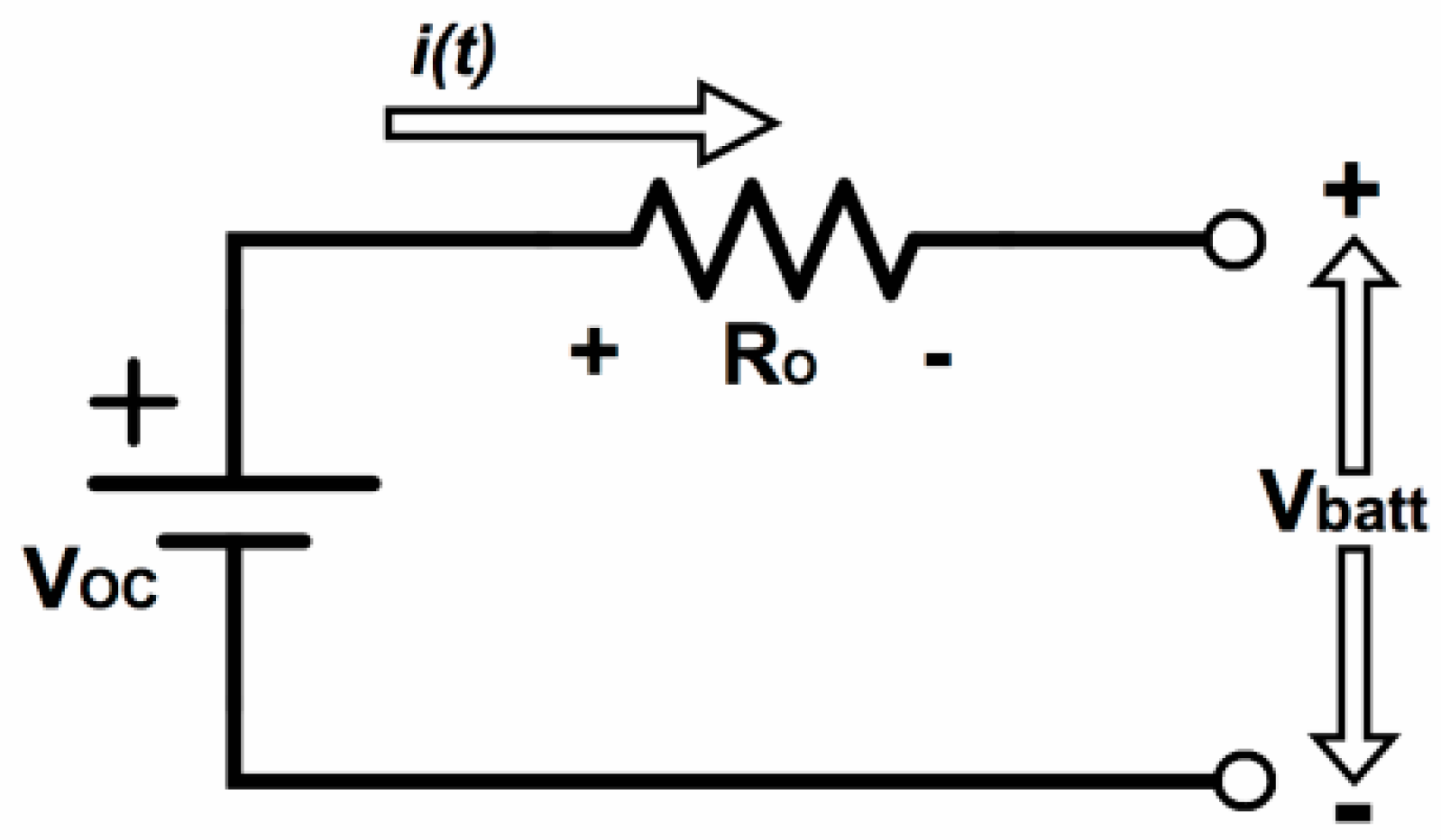

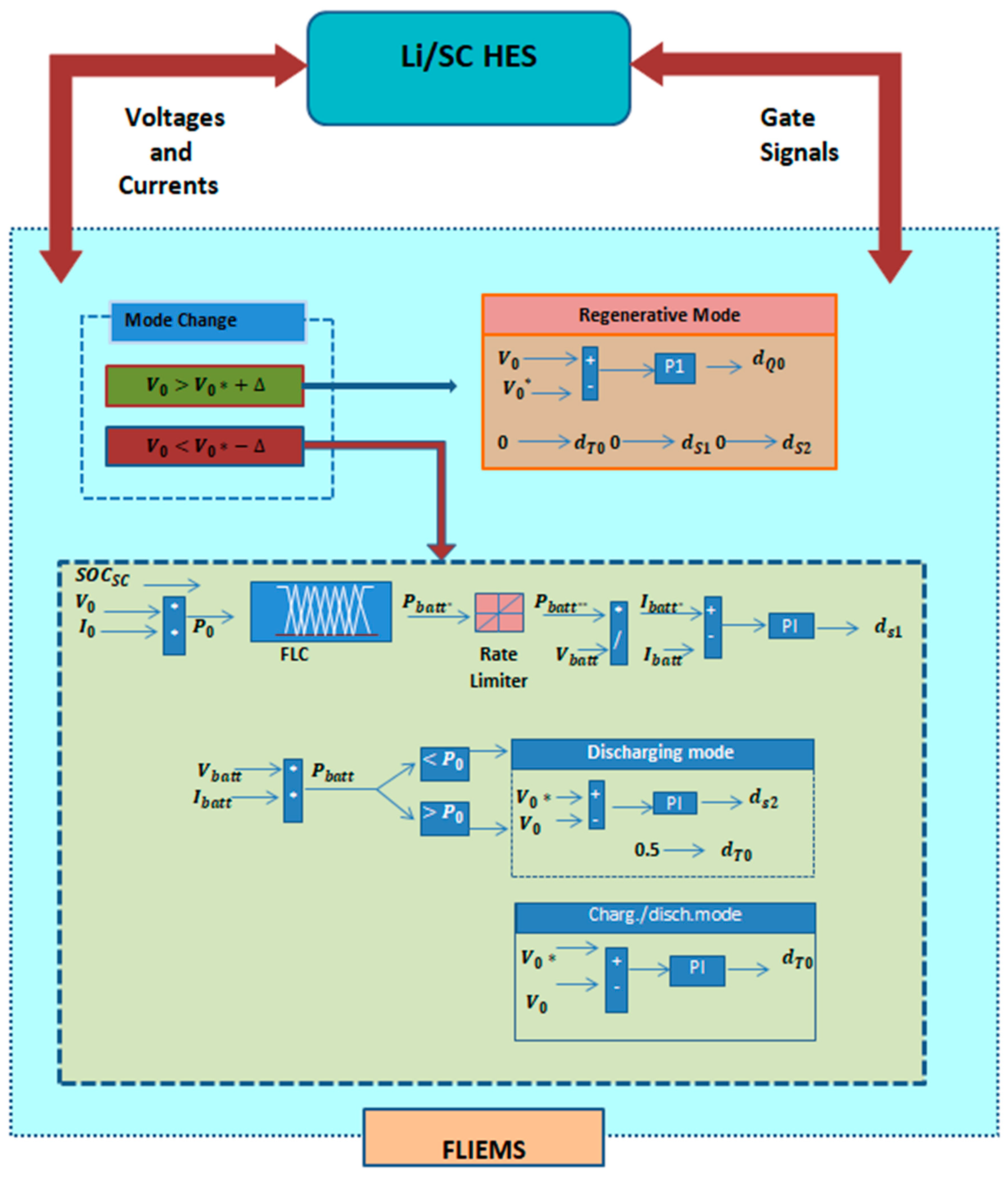
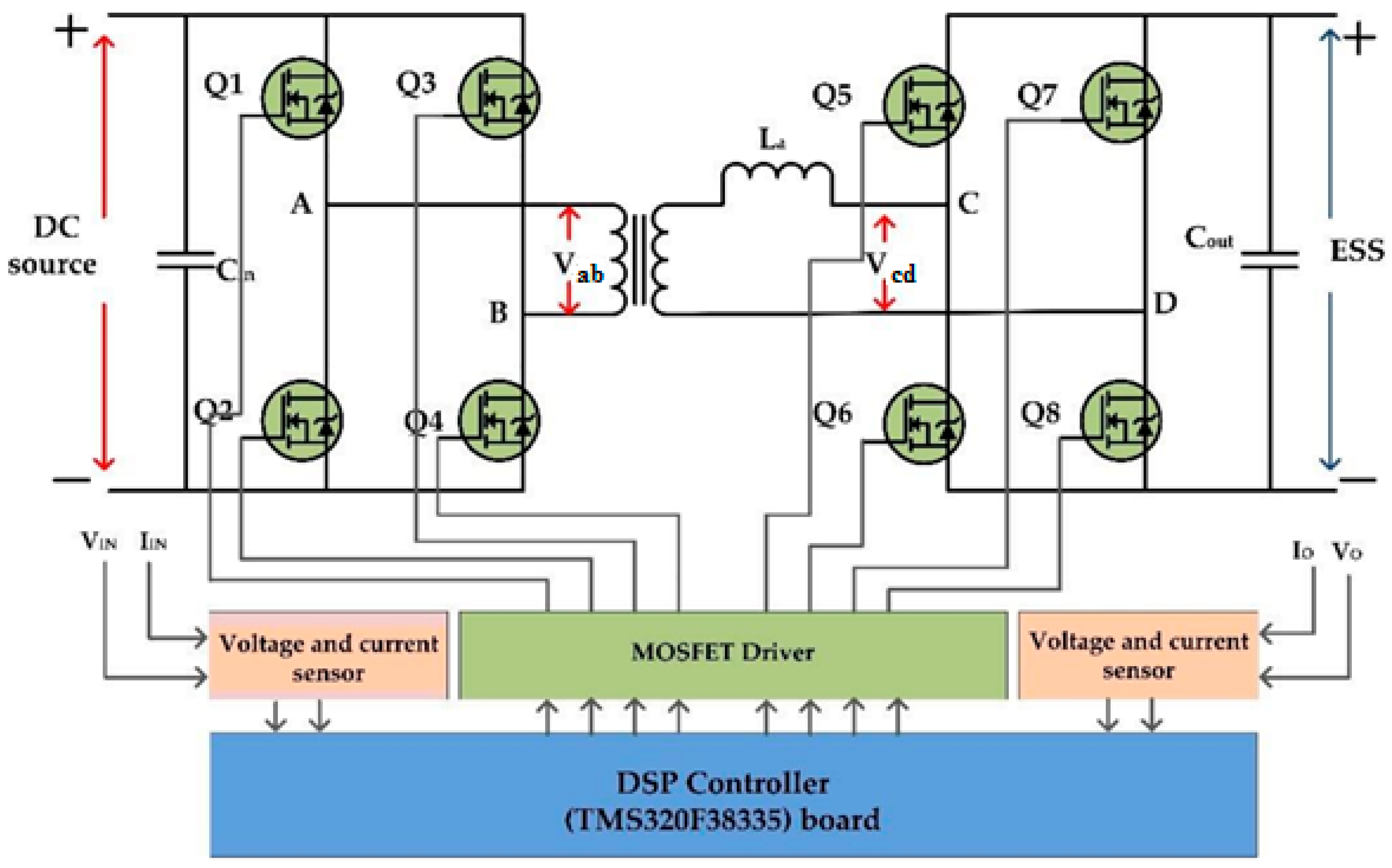


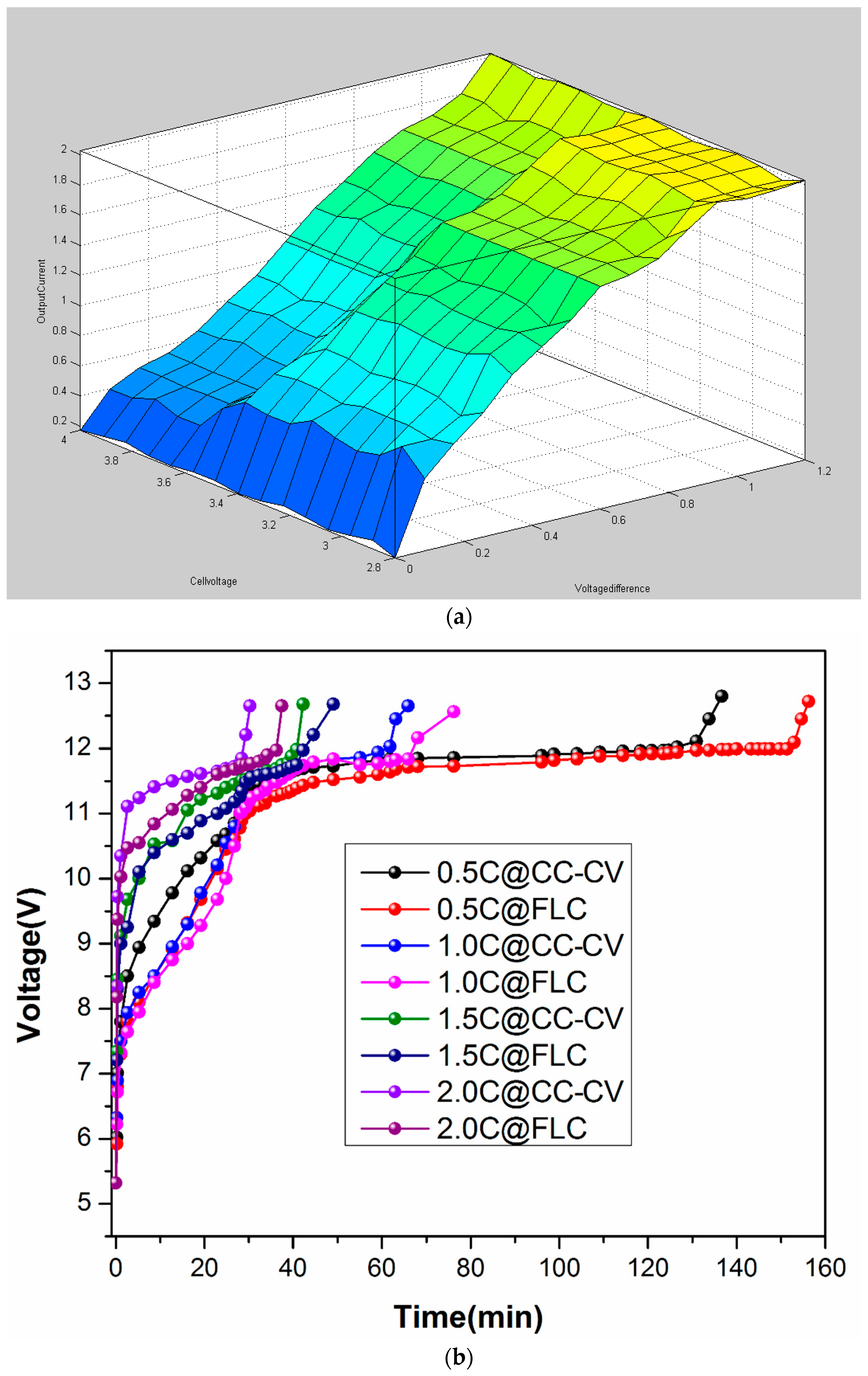

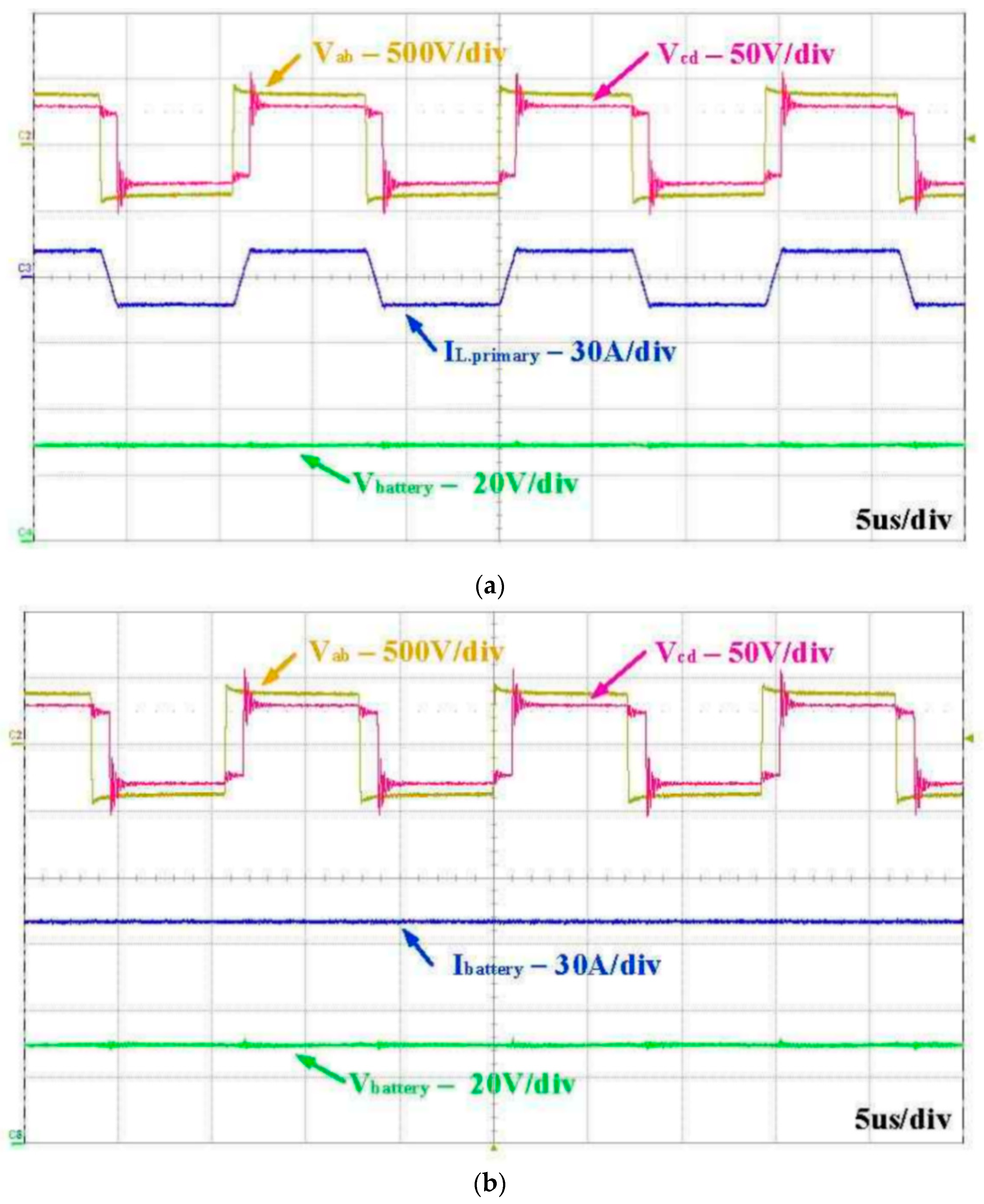
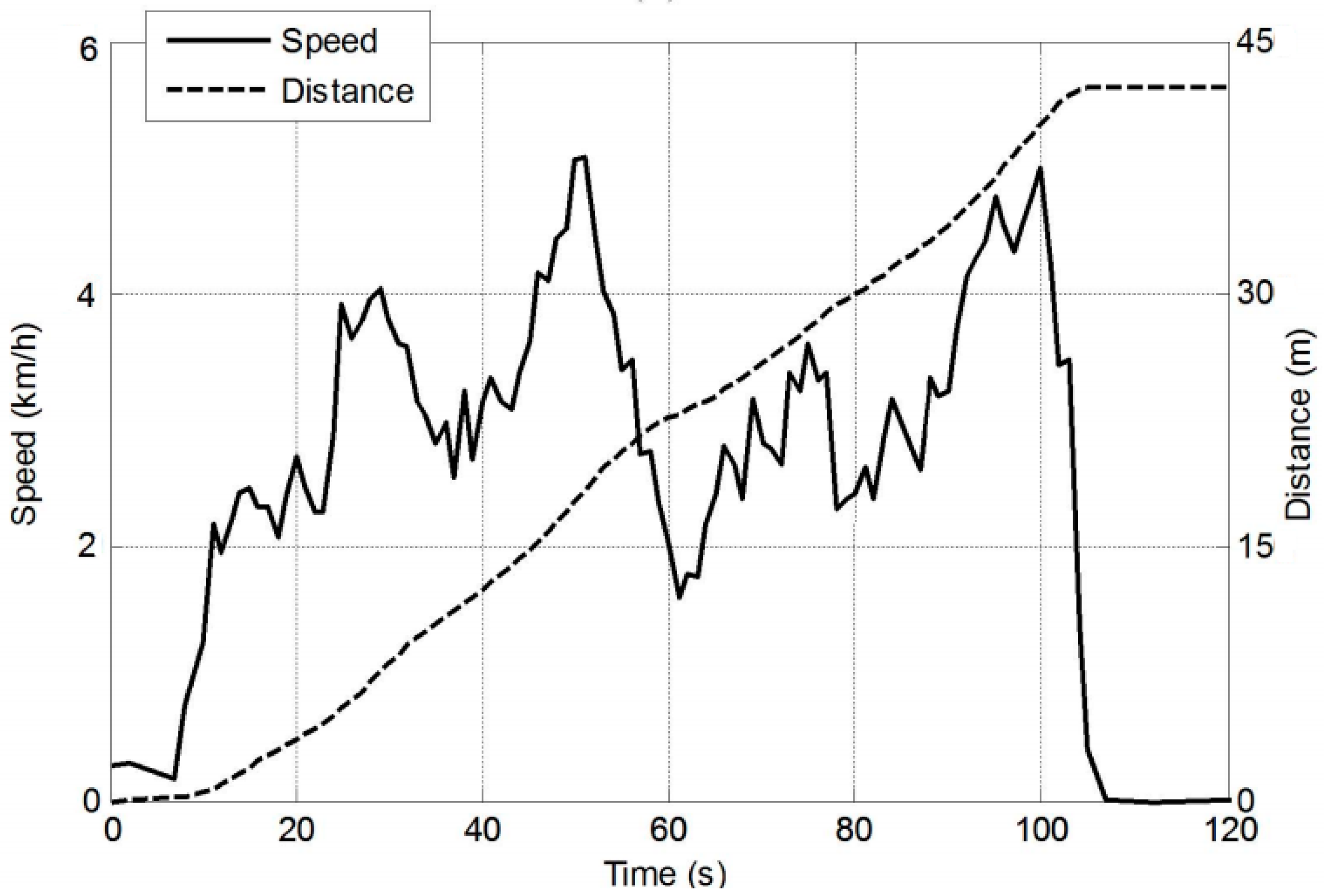



| Rated Voltage (VR) at 65 °C | 2.7 VDC |
| Surge Voltage | 2.85 VDC |
| Rated Capacitance | 100 F |
| DC-ESR | Max. 12 mΩ Avg. 8 mΩ |
| Leakage Current | Max. 0.26 mA |
| Max. Continuous Current | 17 A (ΔT = 40 °C) |
| Max. Peak Current | 61 A (at 65 °C) |
| Max. Stored Energy | 0.10 Wh (at 65 °C) |
| Specific Power | 7230 W/kg |
| Endurance | 1500 h (at 65 °C, 2.7 V) |
© 2018 by the authors. Licensee MDPI, Basel, Switzerland. This article is an open access article distributed under the terms and conditions of the Creative Commons Attribution (CC BY) license (http://creativecommons.org/licenses/by/4.0/).
Share and Cite
Khan, M.A.; Zeb, K.; Sathishkumar, P.; Ali, M.U.; Uddin, W.; Hussain, S.; Ishfaq, M.; Khan, I.; Cho, H.-G.; Kim, H.-J. A Novel Supercapacitor/Lithium-Ion Hybrid Energy System with a Fuzzy Logic-Controlled Fast Charging and Intelligent Energy Management System. Electronics 2018, 7, 63. https://doi.org/10.3390/electronics7050063
Khan MA, Zeb K, Sathishkumar P, Ali MU, Uddin W, Hussain S, Ishfaq M, Khan I, Cho H-G, Kim H-J. A Novel Supercapacitor/Lithium-Ion Hybrid Energy System with a Fuzzy Logic-Controlled Fast Charging and Intelligent Energy Management System. Electronics. 2018; 7(5):63. https://doi.org/10.3390/electronics7050063
Chicago/Turabian StyleKhan, Muhammad Adil, Kamran Zeb, P. Sathishkumar, Muhammad Umair Ali, Waqar Uddin, S. Hussain, M. Ishfaq, Imran Khan, Hwan-Gue Cho, and Hee-Je Kim. 2018. "A Novel Supercapacitor/Lithium-Ion Hybrid Energy System with a Fuzzy Logic-Controlled Fast Charging and Intelligent Energy Management System" Electronics 7, no. 5: 63. https://doi.org/10.3390/electronics7050063









